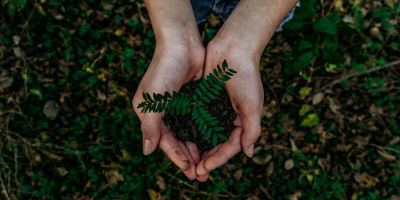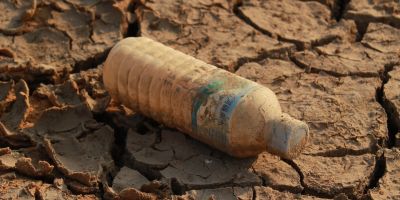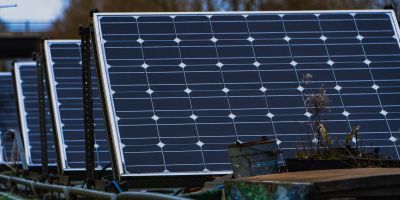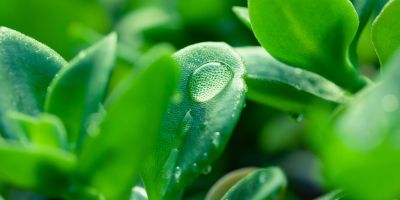Water
FOSTERING A CULTURE OF SUSTAINABLE WATER MANAGEMENT ON CAMPUS
CULTIVATING RESPONSIBLE WATER USE AND CONSERVATION PRACTICES ON CAMPUS IS OUR COMMITMENT TOWARDS ACHIEVEING SDG 2030.
At USM, we are dedicated to fostering sustainable and integrated water resources management that transcends boundaries. We aim to achieve this by monitoring both water quantity and quality, sharing essential water availability information, and actively engaging local communities. Our mission is to facilitate informed decision-making, protect our valuable water resources, and empower local participation in the stewardship of this vital shared asset. Together, we are shaping a future where responsible water management and community involvement are at the heart of our commitment to a sustainable and resilient environment.
-
Sustainable Water Consumption and Maintenance
USM carefully monitors and manages water consumption through distinct approaches:
- Mains Supply: USM efficiently manages water usage sourced from the mains supply across its campuses.
- Desalinated Water: Desalination technology is a process of water treatment to remove dissolved contaminated minerals from saline water resources, including industrial treated wastewater, brackish groundwater and seawater. This desalination technology for water supply and reuse has the potential to reduce the stress on the existing water sources with a minimal impact to the environment. Currently available desalination technology can be categorized as follows: a) Non-phase change processes that involve separation of dissolved salts from the feed waters by mechanical or chemical/electrical means using a membrane barrier between the feed (seawater or brackish water) and product (potable water). Applications of this principle include electrodialysis (ED) and reverse osmosis (RO).
- Extracted Water: USM actively utilizes water extracted from lakes, rain harvester tanks, and tube well water reflecting a commitment to sustainable water sourcing. In specific areas like the Physical Modelling Laboratory and Hydraulic Laboratory in the Engineering Campus, USM optimizes water use for academic and research purposes, emphasizing responsible resource utilization.
-
Water Extraction Technologies
A multidisciplinary research team from USM was awarded a research project by the National Hydraulic Research Institute of Malaysia (NAHRIM) to develop the NAHRIM Environmental Sensor System (NUESS) for water quality monitoring. This project exemplifies the transformative potential of the Fourth Industrial Revolution (IR4.0) in research for Monitoring/Control and Services/Integration Technologies, as the project would develop and integrate sensors for environmental monitoring and water resources for the future, utilising Internet of Things (IOT), Cloud Computing and Big Data.
Researchers from REDAC, USM have been actively involved in water extraction technologies-related projects, specifically:
- Proof of Concept Study on Micro/Pico Hydropower Generation Through Small Stream Flows at Rural and Remote Agriculture Area
- Portable Water Production by the Urban Grey Water Treatment Using Solar Distillation Stills Integrated to AC/DC Solar Power Systems: A Case Study for the Parit Buntar Household Urban Areas, Malaysia.
USM has been appointed as a body utilise different sustainable water extraction technologies, specifically in collaboration with NAHRIM to work on the research projects entitled:
- Feasibility study on wetland construction as an alternative to sewerage systems (Feasibility Study)
- Integrated hydraulic analysis and modeling of alternative water sources in the Sungai Klang Basin for the Preparation of Option Formulations for the Non-Centralized Water Supply System Master Plan in the Federal Territory of Kuala Lumpur
-
In summary, USM employs a multi-pronged strategy to monitor and manage water consumption, considering various sources and promoting responsible resource management across its campuses.
-
Cultivating Water Conservation on Campus
Wastewater Treatment
USM always ensures the management of a well-organized and efficient sewage system to produce high-quality effluent and minimize environmental pollution, in line with the campus sustainability aspects. Monthly testing of the final effluent is conducted to ensure that the effluent released into the drainage system complies with the established standards. Below are the wastewater treatment process practices by USM:
- The wastewater from the buildings in campus will flow into the Sewage Treatment Plant through the sewage pipe system
- The screening process to prevent waste and unnecessary materials, such as plastic bottles, from entering the Sewage Treatment Plant.
- The sludge settling process occurs at the bottom of the tank, while the floating scum rises to the surface of the tank.
- The solid waste in the sewage water will be in a suspended state, and bacteria in the sewage will break down organic materials. This aeration process takes approximately 18 to 24 hours.
- Next is the process of removing sludge from wastewater to ensure that the effluent released meets the standards.
- The properly treated wastewater will be discharged into the existing drainage system. Testing will be conducted on a monthly basis
Water Pollution Prevention
The USM Engineering Campus is set as a pilot project of an ecologically sustainable development in terms of urban storm water management. By integrating storm water utilities with the green away and landscape, the drainage system also enhance the Healthy Campus Concept in USM Engineering campus. The utilization of Bio-Ecological Drainage Systems (BIOECODS) in campus addresses three prevalent issues: flash floods, river pollution, and water scarcity, incorporating various components such as swales, sub-surface modules, dry ponds, wet ponds, detention ponds, constructed wetlands, and wading systems. Below are the procedure of BIOECODS to prevent water pollution:
1. Source Control Approach: Implement a source control approach for stormwater management, as suggested in the Stormwater Management Manual for Malaysia.
Utilize components including ecological swale, on-line underground storage, and dry ponds as part of the BIOECODS system.
2. Integration of Large-Scale Landscapes: Integrate large-scale landscapes into the development as a major element of the stormwater management system.
Combine the concept of BIOECODS with Ecological Ponds (ECOPOND) for further treatment of stormwater runoff.
3. Stormwater Routing: Route stormwater from built areas overland into open conveyance swales planted with native cow grass and underground conveyance made from special materials.
Swales provide initial stormwater treatment, primarily infiltration and sedimentation.
4. Landscape Dry Ponds: Implement landscape dry ponds to diffuse the flows conveyed by the swales. Reduce stormwater velocities to maximize campus sedimentation, infiltration, and evaporative water treatment. Enable natural adsorption and absorption of landscape soils, promoting hydrocarbon breakdown.
5. Detention Pond: Construct a detention pond to serve as stormwater detention, solids settling, and biological treatment.
6. Wetlands: Develop wetlands to provide stormwater detention and additional biological treatment before the runoff enters the recreational pond.
7. Benefits and Environmental Considerations: All these components ensure that the final discharge from the sustainable urban drainage system does not pollute rivers and prevents flooding downstream. Promote the integration of BIOECODS with the development control system in Malaysia.
8. Monitoring and Maintenance: Regularly monitor and maintain the BIOECODS to ensure their continued effectiveness in reducing runoff rates, volumes, and pollutant loads.
This procedure outlines the steps for implementing the USM Engineering Campus Stormwater Management System, emphasizing the use of BIOECODS and natural processes to mitigate the environmental impact of stormwater runoff.Water-Conscious Building Guidelines
USM has been implementing the water-conscious building standards in the campus, and the research team from REDAC, USM has involved in the water-conscious building research, entitled “Sustainable Urban Green Space Management Practice”. A good urban green space management practice contributes positively to some of the key agendas in urban areas and offer useful opportunities to people in different ways. This management practice helps campus to
- Strengthen its long-term perspectives and promotion of sustainability;
- Promote a more holistic overview and better understanding of the urban green space situation, quality as well as the needs, priorities and values of its inhabitants;
- Build a collective vision of its own urban green space development;
- Discover effective ways to solve urban green space problems and develop its urban green space potentials;
- Improve the quality of life i.e. improve its environment together with its facilities for recreation, leisure and social activities;
- Incorporate the urban green space issues into its planning system and legislation;
- Raise public and political awareness for urban green spaces and generate public participation;
- Generate stakeholder and interdepartmental cooperation, and
- Develop long term funding and management opportunities
Greening the Campus: A Commitment to Water-Conscious Landscaping
The concept of The University in A Garden adopted by USM delineates the interlinkages between the roles and functions of the institution of higher education within a garden environment. The elements of the garden - fauna, flora, water bodies and other man-made fixtures - provide a dynamic and nurturing setting for the inhabitants.
USM campus is furnished with water-conscious landscape plants, including Atas Eugenia Oleana, Pandanas sp., Ixora sp., spiral herb, and banana circle, that require minimum care and water consumption after the early stage of growth. Apart from that, the River Engineering & Urban Drainage Research Center (REDAC), USM is involved in the plant-conscious project at Engineering Campus. The research project on the phytoremediation concept have been implemented using the bio-retention system, wet pond, and dry pond. Several plant species such as Typha Augustifolia, Lepironia articulata, Hanguana Malayana and Eleocaris dulcis were planted for storm runoff quality improvement, oxygen improvement and tolerance against organic matters.
-
Revitalizing Resources: Our University's Dedication to Water Reuse
Water Reuse Policy
USM Sustainability Action Plan has been adopted to highlight the sustainability policies and procedures on water, energy, health, agricultural, biodiversity and ecosystem management, and climate change and disaster risk management, that have been conceptualised to meet the priorities of national and local needs.
According to the action plan, USM aims to integrate sustainable water management plan in campus, with the following vision and missions:
- By 2030, 30% reduction in water bills.
- By 2030, 30% use of harvested rainwater for campus toilets.
- By 2030, 100% use of harvested rainwater for gardening.
- By 2030, 70% reduction of missing water in campus.
- By 2030, sustainable water management is integrated in campus.

BUILT ENVIRONMENT
In USM, the built environment emphasizes eco-friendly construction, energy-efficient facilities, and green spaces, fostering a sustainable and conducive campus atmosphere.

WATER
USM prioritizes responsible water use and conservation. We employ water-saving technologies and promote conservation practices, engaging the campus community through education and awareness campaigns.

WASTE
USM emphasizes waste minimization and recycling. Our efforts include recycling facilities, awareness campaigns, and collaborations for proper waste management.

ENERGY
USM prioritizes energy sustainability through efficiency and renewable sources. As part of our effort to reduce carbon emissions, we adopt energy-saving tech, lighting, and solar panels.

CLIMATE CHANGE
USM is dedicated to climate change mitigation and adaptation. We integrate climate topics into our curriculum, conduct research, and organize awareness campaigns, seminars, and workshops.

HEALTH & WELLBEING
USM prioritizes sustainability through health and well-being initiatives by promoting physical and mental health, offering recreational facilities, and fostering a holistic and sustainable campus community.

BIODIVERSITY & ECOSYSTEM
USM emphasizes biodiversity conservation and ecosystem management in conducting research, collaborating with stakeholders, integrating biodiversity education, and practicing sustainable land use.
